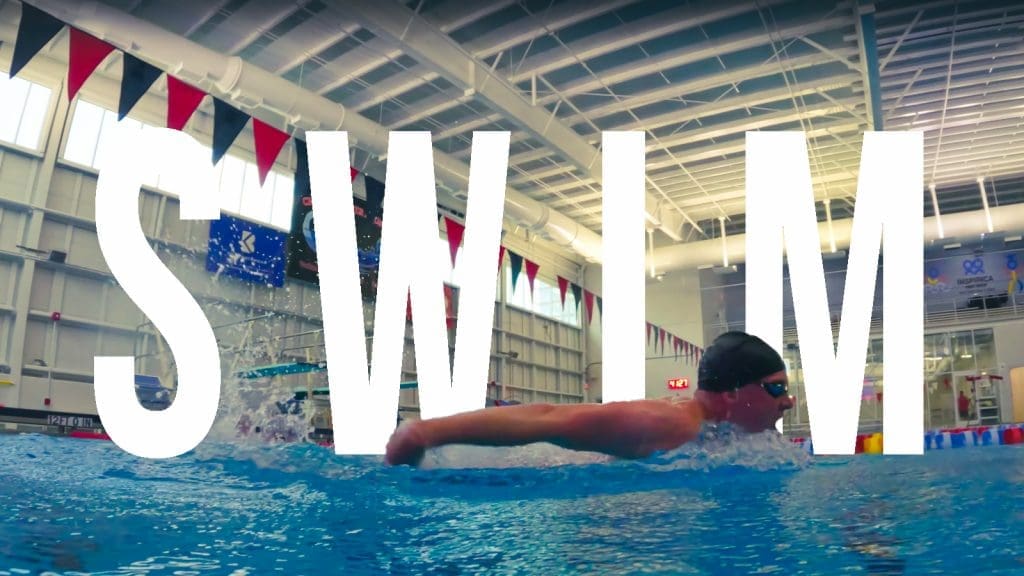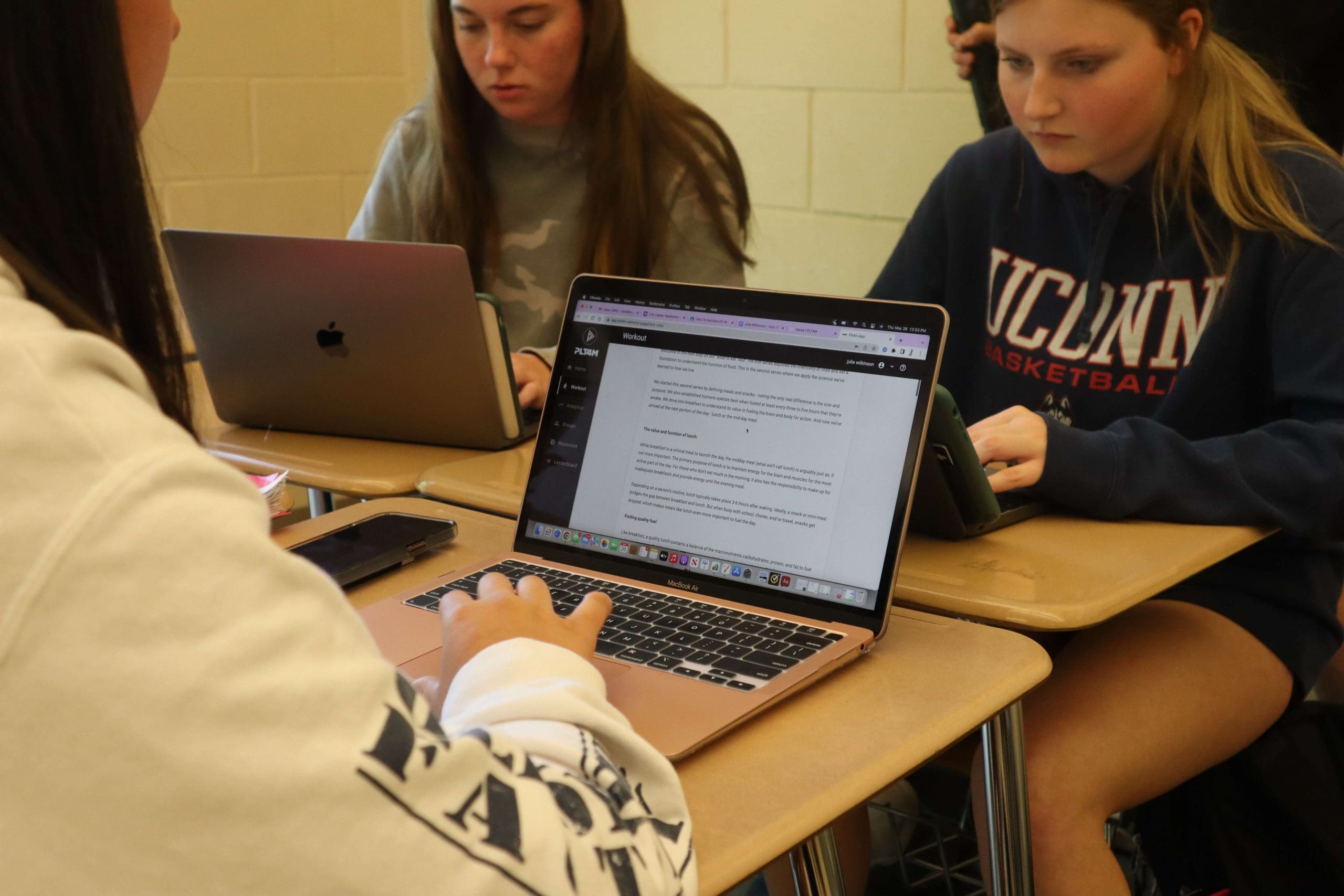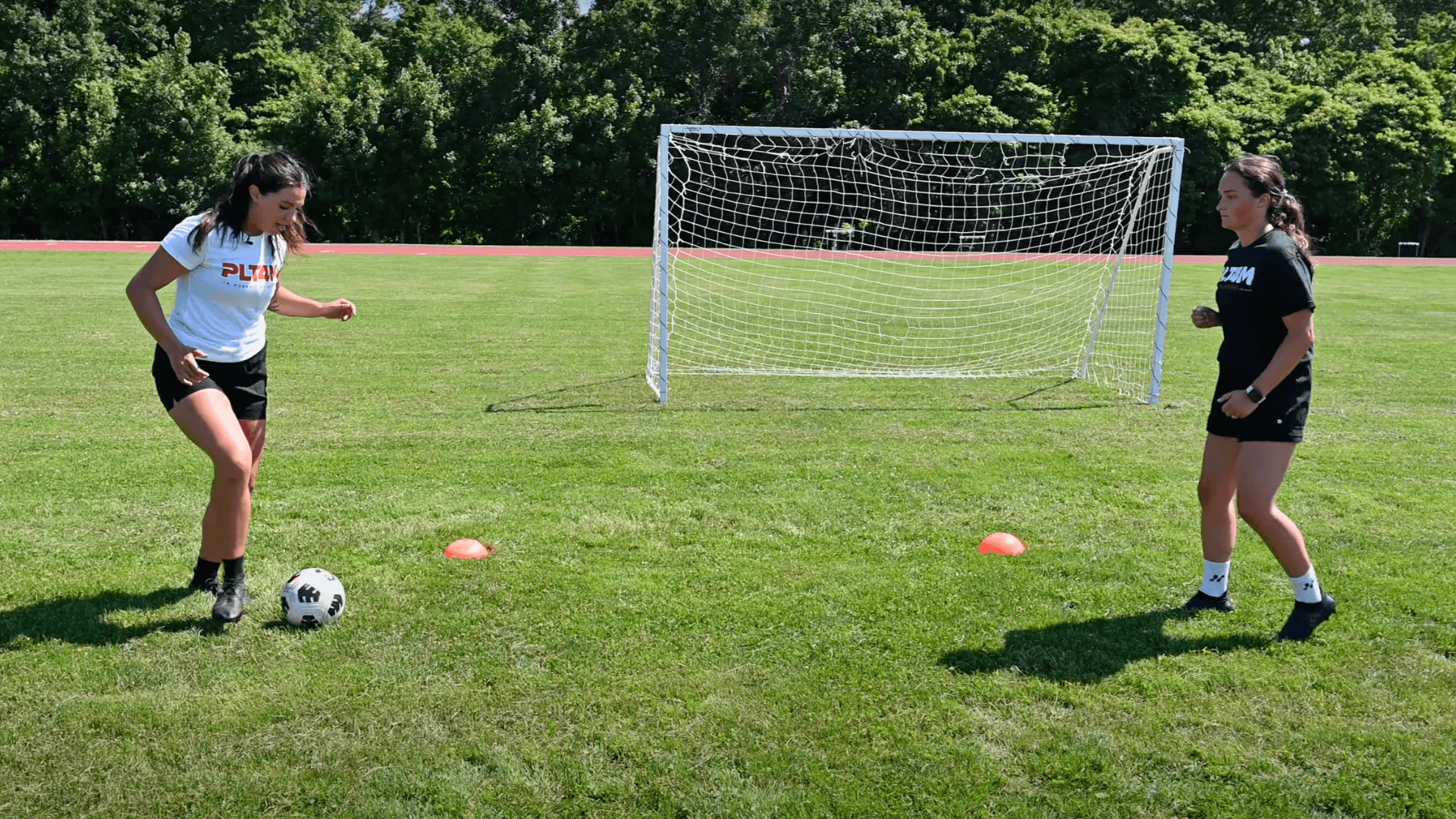Swimming is an amazing lifelong fitness skill. As a result, swimming is a popular addition to physical education curriculum. We explore benefits, tips, and strategies for teaching the 4 strokes of swimming in physical education. As an added bonus, we break down a sample lesson plan for freestyle loaded with instructional videos and written notes.
What Are The 4 Strokes of Swimming?
While there are other strokes like elementary backstroke and side stroke, when people refer to the 4 strokes of swimming, they are talking about:
Freestyle
Backstroke
Breaststroke
Butterfly
These are the 4 main strokes because any type or level of competitive swimming has these in competitive events. But that doesn’t mean these strokes are reserved just for Olympians like Michael Phelps. Even the most recreational swimmers can incorporate these 4 strokes into any swimming routine to get a great workout in the water.

Why Teach The 4 Strokes of Swimming In PE
At the very least, students should be able to perform all the basic lifesaving swimming skills like treading water, breathing, floating, and getting back to the wall or shallow water if fatigued. This allows everyone to safely live in a world surrounded by water, whether a pool, lake, river, or ocean.
But beyond just teaching students the basics of “survival swimming,” teaching the main strokes is an excellent way to advance students’ confidence and comfort in the water.
In addition, practicing the different strokes will help students have an excellent library of options when swimming recreationally or for exercise. Freestyle, backstroke, and breaststroke are excellent lifelong swimming skills, regardless of how much students plan to swim in the future.
As for the butterfly stroke, this is a more challenging stroke that some swimmers might want to avoid altogether. However, you won’t know unless you at least try it! While we again may never take our butterfly stroke beyond PE, it is a great stroke that works a wide range of muscles. Let’s at least give it a try!
Key Components To The 4 Strokes Of Swimming
When teaching the 4 strokes of swimming, we must consider the critical components to success. These foundational swimming elements help us develop and build basic stroke mechanics.
1) Legs/Kick – In swimming, the kick is the motor that helps move us through the water. Therefore, we want to spend ample time reviewing and practicing each stroke’s leg movement. Kicking can be practiced on dryland, in the water holding the wall, and with/without a kickboard, so kicking is a staple of our swimming technique.
2) Arms/Pull – Once we have developed a strong foundation with our kick, we can add different variations of our arm motion. Typically, we start with simple arms drills so swimmers can learn proper range of motion and swimming techniques. We recommend doing this with and without a kickboard over time so swimmers develop great mechanics with their arm movements.
3) Head & Body Position – Finally, we must consider strong swimming technique comes from proper head and body position. Our head, neck, and core stabilize and support our swimming strokes. Many beginner swimmers struggle to maintain a neutral head position and often throw their bodies out of alignment. As a result, swimming becomes an uncomfortable endeavor. Emphasizing a steady head and body position throughout our swimming technique work can build comfort and confidence.
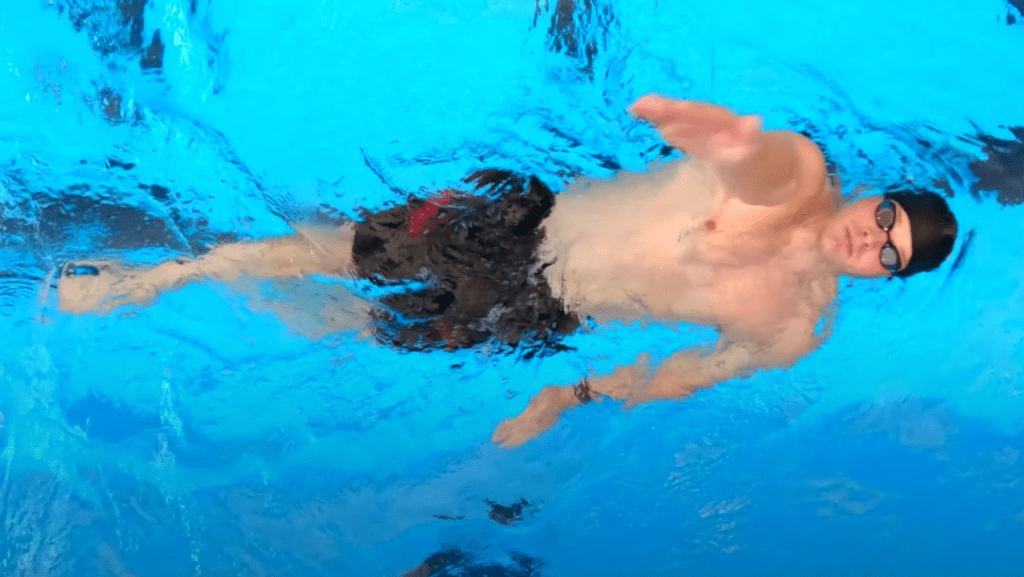
How To Teach The 4 Strokes of Swimming In PE
Utilizing the guiding principles from above, we can create a framework for introducing, practicing, and developing our 4 strokes of swimming. For example, let’s unpack how to structure a freestyle swimming lesson plan. A high level overview of a lesson could be:
4 Rounds of 30 Seconds Flutter Kick On Dryland
4 Rounds of 30 Seconds Flutter Kick On Wall
4 x 25’s Flutter kick & bilateral breathing with a kickboard
4 x 25’s Single Arm Freestyle with a kickboard
4 x 25’s Catch up drill with a kickboard
4 x 25’s Catch up drill without a kickboard
4 x 25’s regular freestyle
In this example, we practice each drill for multiple reps. Give time for recovery so that the swimming technique stays strong throughout the lesson.
Next, we practice drills with and without a kickboard to help develop good body position with support before swimming independently.
In addition, we finish with regular freestyle so swimmers can put all the pieces together to complete a great workout.
Finally, we can and should repeat drills over multiple lessons as it takes time for beginner swimmers to learn and develop any of the main swimming strokes.
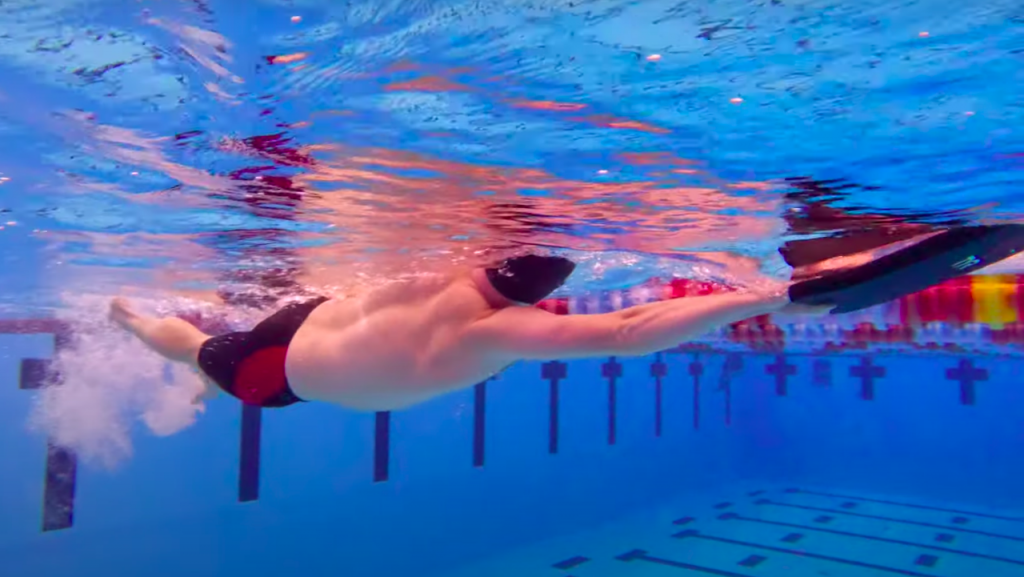
Sample Lesson Plan Materials
Below are instructional videos and notes for the sample lesson plan outlined in the last section. Teachers could watch these as a resource when planning to lead a class. Or teachers could assign these videos to students to watch before class so that they are prepared and well-versed in the upcoming drills and practice.
All of these materials have been created by the PLT4M team. While we are featuring a handful of freestyle drills, reach out to learn more about our full slate of swimming materials and wide variety of other PE lesson plans.
The flutter kick is the foundation of our freestyle stroke. In this drill, we start outside of the water to master the basics of flutter kick before adding the resistance of the water. The steps to the flutter kick are:
1) Lay flat on your back and place your hands by your side (more challenging) or under your butt (less challenging).
2) Straighten your legs and point your toes away from you
3) Kick your legs up and down using your hips and big muscles (hamstrings, quads, and glutes)
4) Work to keep kicks small and fast.
Common Faults:
Bent Knees – Especially when we get into the water, we often see swimmers bend knees and perform a bicycle kick. A helpful trick is working to squeeze your butt and point your toes.
Boot Feet – Pointed toes can be challenging, especially for swimmers with limited mobility. We can develop this skill in the water overtime, but also can help by stretching calves and achilles out of the water.
Notes
To start, we will focus on just performing our flutter kick from the wall. Practicing on the wall can help us learn how to control our body before we set out to actual swimming.
1) Grab onto the wall and reach your arms out to full extension
2) Start with your head down in a neutral position, looking at the bottom of the pool.
3) Point your toes and kick your legs in a small and fast motion up and down. Think about kicking through your hips, quads, glutes, and hamstrings – not from your knees. We want to avoid bicycle kicking.
4) Blow bubbles out underneath the water and pick your head up to breath. Right now we are NOT trying to breath side to side (bi-lateral breathing).
Bilateral Breathing
Once you feel confident with the flutter kick, it is time to add in bilateral breathing. Bilateral breathing means breathing side to side instead of picking your head up out of the water. This is one of the toughest things new swimmers struggle with, but is incredibly important to set a strong foundation. Keep all the same points of performance for flutter kick, but now work to breath to your side:
1) Start with your head down in a neutral position, looking at the bottom of the pool.
2) When you need to breath turn your head sideways leaving one ear in the water and other up and out facing the sky.
3) Breath in through your mouth and then rotate back to neutral position.
4) Rotate your breathing to both sides.
5) If mobility is an issue, it is okay to let go off the wall with the arm you are breathing towards. For example: Drop left arm, roll to left side, breath, and then return arm to wall as you put head back down into water facing neutral position.
Notes
After practicing and developing our kick series on the wall, we are going to take it into the open water of the pool. All of the same principles apply, but now we are going to use a kickboard instead of the wall.
Let’s quickly review how to hold the kickboard. Grip the kickboard with your hands either on the sides or top at the END of the kickboard. We want to avoid laying our entire arm on the kickboard so that we can begin to use our arms in future drills.
From here, we will push off the wall and work to perform all the same components of our flutter kick and bilateral breathing.
Now that we have left the wall, it will be up to your strong kicking to keep your body at the top of the water. Work to keep your arms full extended throughout this drill.
Common Faults:
Looking Up: Many beginner swimmers will pick their head up because it feels more natural. Always work to roll your body sideways, and avoid looking up. Think neutral gaze down or sideways. We really shouldn’t be looking up or picking our heads up when freestyle swimming.
Drinking Water: When we go to breath to our side, it can be hard to create a window to get a good breath of air. Beginners will get comfortable by rotating a little farther on their sides to get a full breath.
Bent Arms: Once we start moving off the wall, the kickboard will be less supportive. Swimmers naturally often bring the board closer to their body with bent elbows. While this is an instinctive reaction, it actually makes staying at the top of the water harder. Keep a strong press with the board!
Notes
Time to add in the arms! Next, we will do a single arm swimming drill with our kickboard.
1) Start by pushing off the wall and kicking to get yourself into your swimming position.
2) Release one hand from the kickboard so that your hand is just outside the frame of the kickboard.
3) With an open hand, pull down and to your side body in a sweeping motion
4) Pull your hand and arm out of the water at the back of your stroke and return it to the kickboard
5) Repeat with same arm for entire length.
6) Focus on keeping your non-pulling arm fully extended for the entire length.
7) When you need to breath, breath towards the arm that you are using to pull.
In this drill, we want to focus on keeping our arm from crossing over the imaginary line in the middle of our body. Work to pull down and towards your hip, not toward your stomach.
Common Faults:
Dropping Shoulders: When performing the pull, swimmers often drop their shoulders and just let gravity do the work. Keep a high shoulder and upperarm, driving most of our pull from elbow, wrist, and hand. This will be more efficient and better for our shoulders.
Fast Arms: In all our freestyle drills, we want to slow down and get our mechanics right. It can be tempting to fly through these drills and take lots of strokes per length. Slow down and get the motion right!
Bent Elbows: The arm holding the kickboard has the tendency to bend. Keep your “lead arm” straight with a strong press. You should feel like you have a string pulling your hand out in front of you.
Notes
Next we will add both arms into the equation. This type of swimming mirrors regular freestyle but with the support of a kicboard.
1) Start with a push from the wall and kicking to your strong swimming position.
2) Now, we will alternate arms. Always return both hands to the kickboard before starting your next pull.
3) Work to take multiple strokes before breathing. When you breath, continue to breath towards the side you are pulling, using the window you have created with your released arm.
Common Fault:
Dropping Shoulders: When performing the pull, swimmers often drop their shoulders and just let gravity do the work. Keep a high shoulder and upperarm, driving most of our pull from elbow, wrist, and hand. This will be more efficient and better for our shoulders.
Fast Arms: In all our freestyle drills, we want to slow down and get our mechanics right. It can be tempting to fly through these drills and take lots of strokes per length. Slow down and get the motion right!
Bent Elbows: The arm holding the kickboard has the tendency to bend. Keep your “lead arm” straight with a strong press. You should feel like you have a string pulling your hand out in front of you.
Notes
First, we will repeat the drills we already learned but WITHOUT a kickboard. If at any point you are struggling to keep your body at the top of the water or maintain good form, always feel free to add the kickboard back in as an added support.
Important Note: The kickboard was helping you keep your body at the top of the water! Now your kick is even more important because it will help you stay afloat.
Our catch up drill is exactly the same, but now we use our hands instead of the kickboard:
1) Start in a streamline position and kick off the wall.
2) Release one hand from streamline and perform a freestyle stroke.
3) Return your hand to streamline position by tapping your opposite hand before starting your next stroke.
4) Work on fully extending your arms out in front of you.
Common Faults:
Half Catch Up: Many swimmers think we are joking when we say they should slap or tap the hand before starting the next stroke. We aren’t! Return to streamline and “catch up” to your next hand.
Bent Elbows: Swimmers struggle to get arms fully extended above head. While it might feel easier to have a bend in the elbow, it is inefficient and can lead people to sink sag in the water. Much like with our kickboard, think about a strong press!
Notes
Now that we have worked on a wide range of drills with and without our kickboard, it is time to try regular freestyle. Throughout our drills, we focused on strong kick, high elbows in the back, extended arms at the front, and clean technique and arm rotation.
Few basics we want to keep in mind once we start to put it all together!
Kick: Straight legs and pointed toes.
Arms In Front: Fully extended elbow. Hand and arm stacked over shoulder.
Pull: Pull down and bring elbow up and out of water before returning to front.
Streamline: Start each new length of freestyle with a strong push and streamline off the wall.
Head & Breath: Keep head in neutral position looking down. When you need to breath, keep one ear in the water and turn towards the side.
If any point in our regular freestyle, we are struggling with any components of our the freestyle, it is okay to go back and rework our different drills with and without a kickboard. Even gold medal swimmers go back to the basics all the time! Don’t be afraid to revisit drills at any time!
Common Faults:
Head Positioning: Swimmers pick heads up and out of water. Swimmers bob head all over the place. We want a neutral gaze and steady neck and head position for all our swimming.
Arm Cross Over: Swimmers cross the imaginary midline and pull towards center of body, rather than right outside the body frame. Swimmers should keep elbow high and pull down towards side body.
Other Considerations For Teaching Swimming In PE
- First and foremost, we are not looking to create olympic swimmers with these materials. Our goal is to develop the basic skills so that swimming can be a lifelong fitness skill for students. As such, all of these materials focus on the BASICS of our four strokes and put together different elements to eventually lead to successful swimming.
- Next, safety must be our top priority. We want to ensure that swimmers stay safe throughout an entire workout. If you have a full 25-yard pool, determine if swimmers can travel the full distance or need to scale and cut down the distance in half (12.5 yards). Depending on the pool set up, beginner swimmers should either be able to stand (shallow end) or grab onto a wall at any point as they practice these swim skills.
- Regardless of the distance swimmers will travel, we recommend practicing the different drills for multiple reps in a workout. These materials do follow a suggested sequential order to start. Meaning, we start with the basics and build up to more complicated drills over time. However, swimmers can and should repeat drills over multiple lessons to really master the basics of the different strokes. Swimming is about repetition and getting comfortable and confident in the water.
- Kickboards are a must! We want to ensure that students can practice swimming with the support of a kickboard or similar device (noodle, buoy, etc). This will allow students to stay at the surface of the water for introductory drills and really start to get comfortable. Overtime, we can remove the kickboard when appropriate and continue practicing the drills. Again, we can always return to the kickboard or other device at any point if fatigue sets in, or we start to struggle with form or technique.
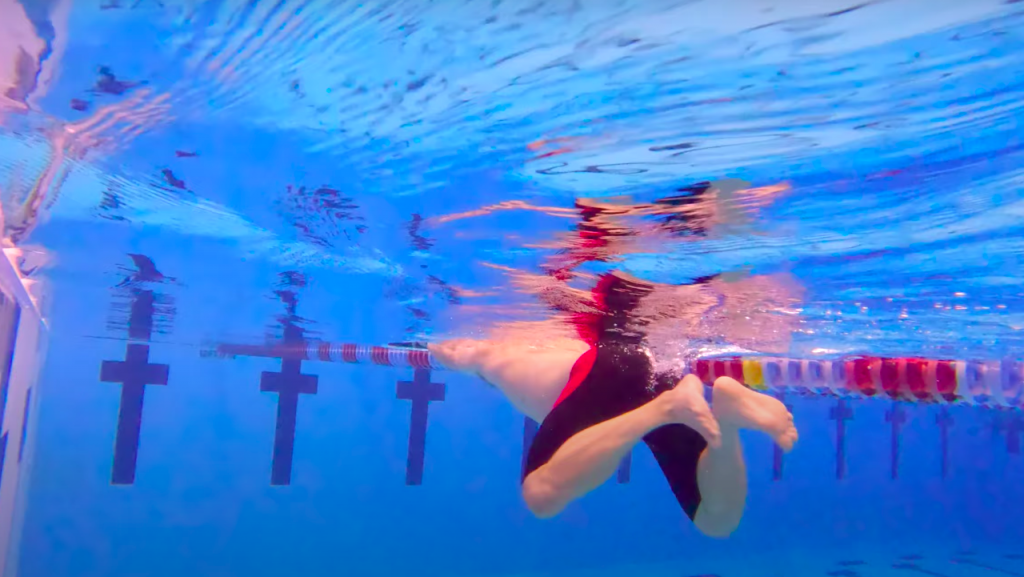
Key Takeaways on Teaching the 4 Strokes of Swimming in PE
The freestyle, backstroke, breaststroke, and butterfly are all fantastic additions to your swim curriculum. While we unpacked our freestyle swimming in more detail as an example, PLT4M has an entire library of content for all 4 strokes of swimming. Reach out to learn more!
Regardless of your plan and approach to introducing the 4 strokes of swimming, always remember that we want to keep students safe in the water. Ensure that all safety precautions are taken so your swimmers can learn and develop in a supportive environment.
Finally, remember that developing and getting comfortable with our swim strokes takes time. Repeating and returning to drills multiple times throughout the process is okay. All swimmers will significantly benefit from spending time in and out of the water practicing form and technique. Have fun as you take a DIVE into the fun world of swimming.
FAQ
What other types of lesson plans and workouts does PLT4M have?
Consider PLT4M your full learning management system for health and physical education.
PLT4M has a full slate of PE lessons for physical education teachers to choose from! From PE games to fitness activities, PLT4M has countless options. Check out some of the most popular below:
